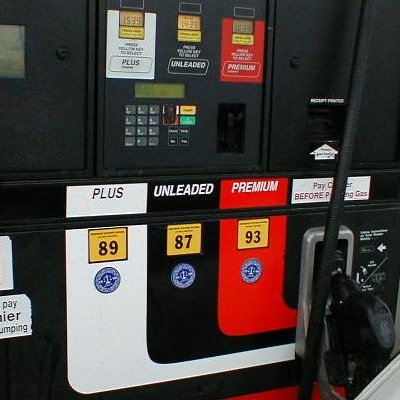Oregon Average Dips Below $3
Pump Prices could fall another 15-20 cents by New Year’s Eve

(PORTLAND, Ore) — “The Oregon average is at its lowest price since October 2010. It dipped below $3 a gallon last Thursday for the first time since November 12, 2010. For the week, the Oregon average plunges nine cents to $2.92 a gallon. The national average nosedives a dime to $2.66 a gallon and is at its lowest price since February 2010.” AAA Oregon/Idaho Public Affairs Director Marie Dodds says, “As crude oil prices continue to slide, the national average could test $2.50 by Christmas and the Oregon average could fall to around $2.75.”
Pump prices have already tumbled more than a dollar from the 2014 peak prices. The national average peaked at $3.70 a gallon in April and the Oregon average peaked at $3.98 in July.
Gas prices normally go down in the fall due to decreased demand and the switch to the cheaper winter-blend fuels. This year, plentiful global crude oil supplies have sent crude oil prices plummeting and consumers can expect retail gas prices to continue to move lower as we approach New Year’s Day.
Crude oil would have to fall by another $25 to $30 per barrel to cause the national average to drop below the $2 per gallon threshold this winter, which remains unlikely. The price of oil accounts for approximately two-thirds of the price at the pump, and a $10 per barrel drop in the price of crude oil results in about a 25-cent drop in retail prices for consumers. While it’s doubtful that any state’s average will fall below $2 per gallon, there are individual stations in the nation’s cheapest markets where drivers can currently fill up for less than $2.
Oregon is one of 47 states and Washington D.C. where the current average is below the $3 mark. The nation’s most expensive markets are Hawaii ($3.77) and Alaska ($3.44), followed by the Northeastern states of New York ($3.07) and Connecticut ($3.01). These are the only four states where the average is more than $3. Consumers in Missouri are paying the least at $2.35 per gallon.
Week-over-week, the price of gasoline is down by a nickel or more in every state and Washington, D.C., and the average is down a dime or more in 19 states. With the exception of Delaware (-9 cents), the average price at the pump has tumbled more than a dime in every state and Washington, D.C. over the past month. Drivers in 27 states are enjoying month-over-month savings of a quarter or more.
Yearly comparisons continue to reflect the most extreme drops in the price at the pump. Not only is the average price down in every state and Washington, D.C. from this date in 2013, but consumers in 46 states, including Oregon, and the District of Columbia are saving more than a quarter per gallon.
Global oil markets are still struggling to find a bottom since the decision by the Organization of Petroleum Exporting Countries (OPEC) to maintain production levels. Brent Crude and West Texas Intermediate reached their lowest levels in five years on Friday and this continues to mean cheaper gasoline at the pump for drivers. In an attempt to protect its share of the global market, Saudi Arabia, OPEC’s second largest member, is sustaining its recent price cuts and is offering barrels of oil at prices not seen in at least 14 years.
This move could possibly put pressure on U.S. crude production, which is at its highest level in 30 years, and has been a leading factor for the global oil market’s increase in supply. The new oil production that has come online in the U.S. in recent years is generally understood to cost more to get out of the ground than oil produced in Saudi Arabia. If oil prices continue to fall, this more expensive U.S. production could stop being profitable, which could take some production offline until prices increase again. At the close of formal trading on Friday, West Texas Intermediate (WTI) settled below $66 per barrel for the first time since 2009, down 97 cents at $65.83 per barrel.
At the close of Monday’s formal trading on the NYMEX, WTI fell $2.79 (4.43 percent) to $63.06 per barrel. Today WTI is trading around $64 a barrel, compared to $68 a week ago. Crude prices are down about 17 percent over the last month and are about $35 lower than a year ago.
For the fifth week in a row, there are no states with an average price for regular unleaded at or above $4 a gallon. Forty-seven states have averages below $3 per gallon, up from 42 a week ago. Two additional states are within a dime of the $3 mark.
Hawaii has the most expensive gas in the country for the 111th consecutive week at $3.77, followed by Alaska at $3.44, New York at $3.07, Connecticut at $3.01 and Vermont at $2.98. California is sixth at $2.97 (down eight cents and sixth for the third week in a row. It’s the first time since 2010 the California average has dropped below $3). Washington is seventh at $2.97 (down eight cents and down from fifth last week). Oregon is ninth down from eighth last week at $2.92 (down nine cents). Idaho is 16th down from 10th last week at $2.81 (down 16 cents). Missouri has the cheapest gas in the nation for the third week in a row at $2.35 a gallon (down nine cents).
Diesel prices are also moving lower. The national average falls seven cents to $3.49 a gallon. Oregon’s average skids 11 cents to $3.45. Diesel is at or above $4 a gallon in just one state, down from two last week. Hawaii is most expensive at $4.79, followed by North Dakota at $3.99, Michigan at $3.81, Minnesota at $3.78 and Alaska at $3.75. ). Idaho is 17th up from 19th at $3.59 (down eight cents). California is 18th down from 17th last week at $3.59 (down eight cents). Washington is 20th down from 18th last week at $3.58 (down nine cents). Oregon is 32nd down from 29th last week. A year ago, the national average for diesel was $3.85 and Oregon's was $3.86.
Source: AAA



